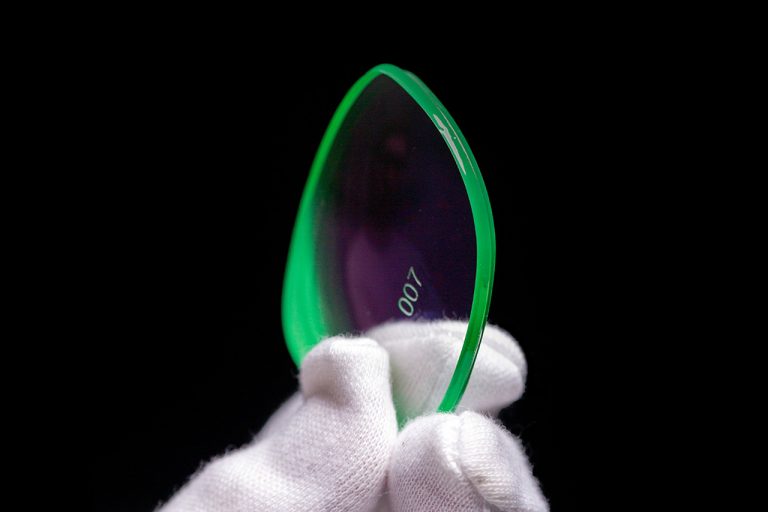10 things you should know about PFAS

The regulation of “Forever Chemicals”
In 2023, the much-discussed ban of approximately 10,000 substances − so called PFAS (per- and polyfluoroalkyl substances) − already made big waves in the European Union. Now there are also initial plans to regulate PFAS in the USA − but the potential ban is polarizing. On the one hand it is about protecting people and the environment, on the other hand a blanket ban would affect thousands of everyday items and processes, some are even vital. Be it medical products, refrigerators or heat pumps. Many details about the ban on “Forever Chemicals” are still unclear ‒including the extent to which the laws will later affect ophthalmic products in general and specifically medical devices. However, 10 interesting details about PFAS and their regulation can be found here.
1. What are PFAS?
PFAS are a group of substances that comprises an estimated number of more than 10,000 different substances. PFAS do not occur naturally and have only been produced and used since the late 1940s. Chemically speaking, the organic compounds consist of carbon chains of different lengths in which the hydrogen atoms are completely (perfluorinated) or partially (polyfluorinated) replaced by fluorine atoms.
Those chains of linked carbon and fluorine atoms are among the strongest bonds in organic chemistry. This is where the name “Forever Chemicals” comes from. PFAS are extremely durable and do not simply degrade in the environment. However, it is precisely this durability and special properties that make PFAS interesting for many products.
2. Best-known representatives of the PFAS group
The best-known representatives of the PFAS-group are PFOS (perfluorooctane sulfonic acid) and PFOA (perfluorooctanoic acid). They have been produced and used since the 1950s. Most toxicological and other scientific information is available on these two substances.
For some time now, other PFAS have been increasingly used. The latest generation of PFAS are, for example, ADONA and GenX, so-called perfluoroethers, in which the fluorinated carbon chain contains bridges of oxygen atoms. There are also PFAS that contain chlorine atoms as well as fluorine in their structure.
For most of the newer PFAS, authorities and scientists have little information on the exact chemical structures, the behavior of the substances in the environment and effects on humans.
3. In which products do PFAS occur?
In general, PFAS can be found in a wide range of different products, both in industry and in consumer goods. Due to their special properties such as stability as well as water, grease and dirt-repellent properties, they are in demand in many products. These include pans, shampoos, baking paper and dental floss, but also medical implants or heat pumps – this list could be continued endlessly. In production processes, they are used especially under extreme conditions. To what extent ophthalmic optics products are concerned, is still being evaluated. For example if PFAS are used in lens blanks or anti-reflective coatings. But it is very likely that PFAS are a common component of hydrophobic and super-hydrophobic coatings, of anti-fog sprays and hard contact lenses. For many manufacturers of these products, it is still unclear how the corresponding material properties could be produced without the use of PFAS.
4. Accumulation in soil, water and humans
But the special properties of PFAS pose problems. Due to their longevity PFAS have continued to accumulate in soil and drinking water worldwide. Therefore the substances enter the body of humans via drinking water and food where the PFAS can bind to proteins in the blood, liver or kidneys and thus accumulate in the body. In various studies, on different places in the world, PFAS were detected in the blood of nearly all study participants, sometimes even in 100% of the participants.
Scientists have tested children and adolescents throughout Europe for their exposure to various chemicals, including PFAS. The concentrations found exceeded the critical weekly dose suggested by the EFSA by a factor of a thousand. The compounds PFOS and PFOA had accumulated to a high degree in the blood of the study participants.
5. What is the problem with PFAS?
PFAS are not acutely toxic chemicals. Using a Teflon frying pan or wearing a Gore-Tex rain jacket is not dangerous at first, but the accumulation in the body via water and food.
For most representatives of the substance class, there are no reliable studies on health consequences so far. However, it is known that some of them are definitely harmful to health but it is difficult to assess how dangerous PFAS really are in their entirety because the substance class contains a large number of compounds. Today, science is already aware of some very serious consequences that can result from long-term exposure to some PFAS. Long-chain PFAS in particular, such as PFOS, PFOA, PFHxS and PFNA, remain in the human organism for a long time after ingestion. They do not accumulate in fatty tissue, but in organs − for example in the liver − and in the blood, where they bind to blood proteins.
Studies on larger populations indicate that certain PFAS can damage the liver, the hormonal and immune systems, disrupt fat metabolism, impair the effect of vaccinations, result in lower birth weight, reduce fertility or cause cancer. Babies absorb the substances both via the placenta and later via breast milk. This is why their use should be regulated in some countries. By the way: some PFAS have already been banned in the USA and the EU for some time − but not all of them.
6. Current situation in the USA
The legal situation in the USA is currently very confusing, as the individual states sometimes set different requirements than the United States Environment Protection Agency (EPA). However, EPA recently implemented what is called reporting and recordkeeping requirements for PFAS.
“EPA is requiring any person that manufactures (including import) or has manufactured (including imported) PFAS or PFAS-containing articles in any year since January 1, 2011, to electronically report information regarding PFAS uses, production volumes, disposal, exposures, and hazards […] Any entities, including small entities, that have manufactured (including imported) PFAS in any year since 2011 will have 18 months following the effective date of this rule to report PFAS data to EPA. Small manufacturers (as defined at 40 CFR 704.3) whose reporting obligations under this rule are exclusively from article imports will have 24 months from the effective date of this rule to report PFAS to EPA,” says the EPA website
According to The Vision Council there might be one good news, because “Not all products will be covered. Products regulated by agencies other than the EPA are exempt from Toxic Substances Control Act (TSCA) For example, medical devices and drugs regulated by the U.S Food and Drug Administration are exempt from the EPA’s laws. The FDA, however, does regulate materials in medical devices for biocompatibility so a possible scenario where the FDA uses its laws to recall medical devices containing PBTs or PFAS is not too unreasonable.”
7. Current situation in the EU
In the European Union, the European Chemical Agency (ECHA) evaluation is currently being carried out by the ECHA Scientific Committees for Risk Assessment (RAC) and Socio-Economic Analysis (SEAC). The evaluation is divided into sectors of use. As soon as the scientific evaluation by RAC and SEAC has been completed and the comments on the dossier have been adopted, these are forwarded to the European Commission together with the revised dossier, the comments and feedback on the comments. The Commission will then decide together with the EU Member States on a possible restriction.
8. Criticism of the blanket ban
Some industry representatives criticize that a general ban makes little sense. Instead, it should be looked at where PFAS could realistically be replaced and where the greatest risks exist. In addition, a pending PFAS ban currently makes it impossible for the industry to make medium and long-term product plans.
The German industry association Spectaris warns that the PFAS ban could become a high-tech ban. “PFAS are indispensable for many industrial processes. Nevertheless, the EU has come out in favor of a blanket ban on around 10,000 PFAS substances because some of them are harmful if they are released into the environment. This comprehensive regulatory approach jeopardizes entire production processes in the Spectaris industries and is not sufficiently scientifically sound. A blanket ban on PFAS makes the use of indispensable high-performance materials impossible in many cases and massively jeopardizes technological sovereignty and security of supply in the EU,” stated the industry association.
9. Good news – plasma destroys PFAS
Researchers are now working at full speed to find alternative solutions. For example on processes that might remove PFAS from the water.
At the Fraunhofer Institute for Interfacial Engineering and Biotechnology, a method for degrading PFAS from real water samples was developed. In the project, supported by the Federal Ministry of Education and Research of Germany, an atmospheric pressure plasma was used.
The results showed that it was possible not only to reduce the total concentration of PFAS in the water but also to demonstrate the chain-shortening required for mineralization.
10. Functionalization of survaces to avoid PFAS
Of course, it would be best to avoid PFAS from the outset. One possible approach is the functionalization of surfaces. A source of inspiration for functional surfaces is nature.
Sharkskin, for example, has a serrated surface that reduces flow resistance and at the same time prevents barnacles from settling. The start-up Surfunction has set itself the goal of transforming such natural phenomena into industrial solutions. Using a special laser process, a wide variety of surface structures can be created.








